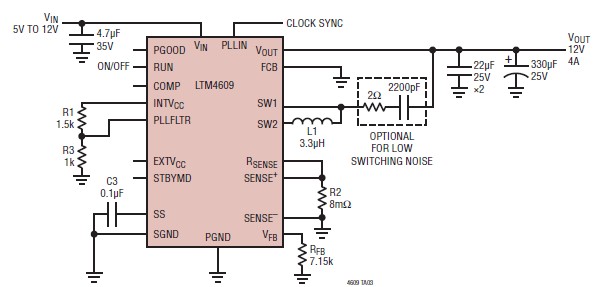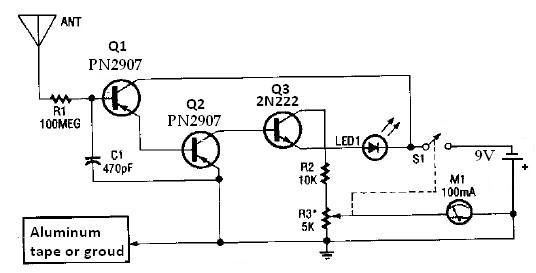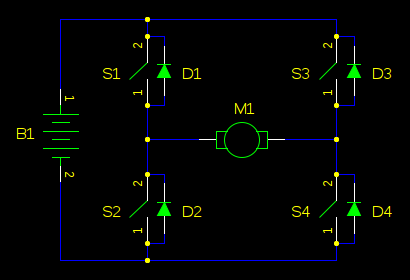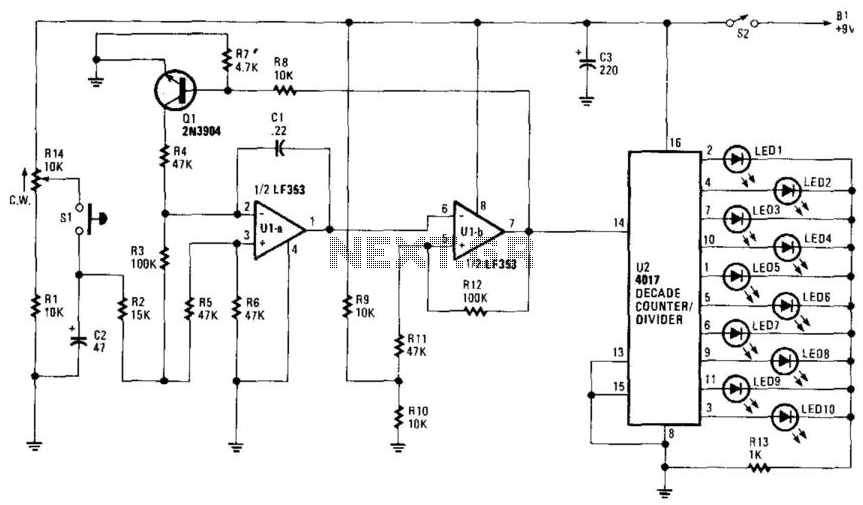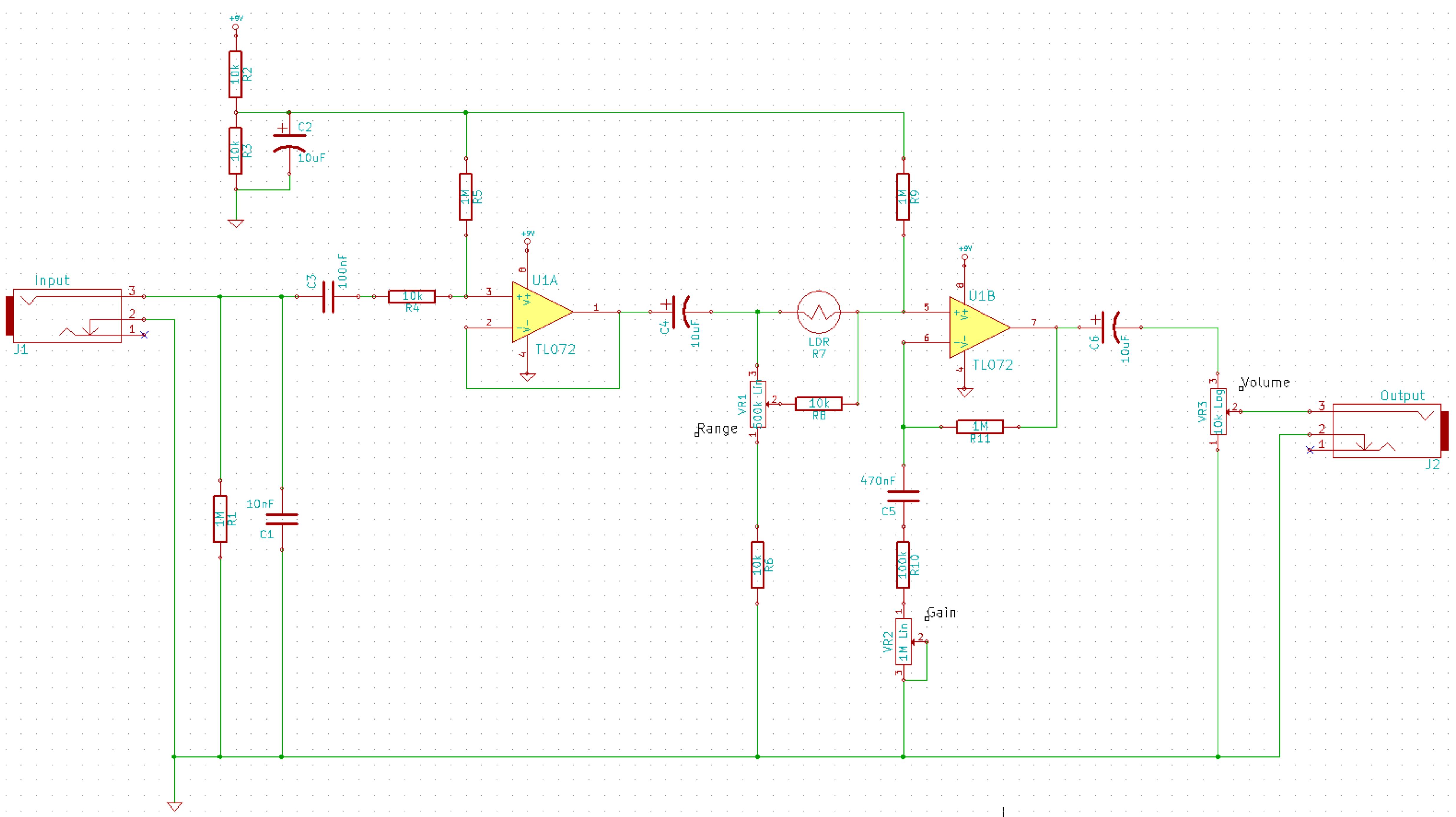
System for solar orientation using common electronic parts

The solar orientation circuit employs a comparator with window control to maintain engine idle as long as the two LDRs (light-dependent resistors) are exposed to equal illumination. In this scenario, half the supply voltage is applied to the non-inverting input of A1 and the inverting input of A2. When the sun's position shifts, the illumination affecting LDR R1 and R2 becomes unequal, causing the comparator input voltage window to deviate from half the supply voltage. Consequently, the comparator output signals the engine to adjust its position, either directly or by rotating counterclockwise.
The solar orientation circuit is designed to optimize the alignment of a solar panel or similar device by utilizing two LDRs, which are sensitive to light intensity. The core component of this circuit is a comparator configured to operate with a window control mechanism. In typical operation, both LDRs are connected to a voltage divider, ensuring that when they receive equal illumination, the voltage at the non-inverting input of the comparator (A1) and the inverting input of the second comparator (A2) remains balanced at half the supply voltage.
When the sun moves, the intensity of light on the LDRs changes. This variation in light causes a difference in the resistance of each LDR, which in turn alters the voltage levels at the inputs of the comparators. If one LDR receives more light than the other, the voltage at the non-inverting input of A1 will exceed the threshold set by the inverting input of A2, resulting in a change in the output state of the comparator.
The output of the comparator can be used to control a motor or actuator that adjusts the position of the solar panel. If the output indicates that LDR R1 is receiving more light, the system will trigger the motor to rotate counterclockwise to realign the panel towards the sun. Conversely, if LDR R2 receives more illumination, the system will adjust the motor in the opposite direction. This feedback mechanism allows for continuous adjustment, ensuring that the solar panel remains optimally oriented to capture the maximum amount of sunlight throughout the day.
In summary, the solar orientation circuit effectively utilizes a comparator and LDRs to maintain optimal alignment with the sun, enhancing the efficiency of solar energy collection through automatic adjustments based on light intensity variations.The solar orientation circuit uses a comparator with window control that maintains engine idle as long as the two LDR`s (photoresist) are subjected to the same illumination. In this case, half the voltage is applied to the noninverting input of A1 and A2`s inverting input. When the sun`s position changes, lighting affecting LDR R1 and R2 sites is different, the comparator input voltage window is not half the supply voltage, the comparator output so that the engine generates information for the purposes of direct or rotate counterclockwise counterclockwise. 🔗 External reference
The solar orientation circuit is designed to optimize the alignment of a solar panel or similar device by utilizing two LDRs, which are sensitive to light intensity. The core component of this circuit is a comparator configured to operate with a window control mechanism. In typical operation, both LDRs are connected to a voltage divider, ensuring that when they receive equal illumination, the voltage at the non-inverting input of the comparator (A1) and the inverting input of the second comparator (A2) remains balanced at half the supply voltage.
When the sun moves, the intensity of light on the LDRs changes. This variation in light causes a difference in the resistance of each LDR, which in turn alters the voltage levels at the inputs of the comparators. If one LDR receives more light than the other, the voltage at the non-inverting input of A1 will exceed the threshold set by the inverting input of A2, resulting in a change in the output state of the comparator.
The output of the comparator can be used to control a motor or actuator that adjusts the position of the solar panel. If the output indicates that LDR R1 is receiving more light, the system will trigger the motor to rotate counterclockwise to realign the panel towards the sun. Conversely, if LDR R2 receives more illumination, the system will adjust the motor in the opposite direction. This feedback mechanism allows for continuous adjustment, ensuring that the solar panel remains optimally oriented to capture the maximum amount of sunlight throughout the day.
In summary, the solar orientation circuit effectively utilizes a comparator and LDRs to maintain optimal alignment with the sun, enhancing the efficiency of solar energy collection through automatic adjustments based on light intensity variations.The solar orientation circuit uses a comparator with window control that maintains engine idle as long as the two LDR`s (photoresist) are subjected to the same illumination. In this case, half the voltage is applied to the noninverting input of A1 and A2`s inverting input. When the sun`s position changes, lighting affecting LDR R1 and R2 sites is different, the comparator input voltage window is not half the supply voltage, the comparator output so that the engine generates information for the purposes of direct or rotate counterclockwise counterclockwise. 🔗 External reference
